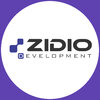Filter interviews by
Hoffensoft IOS Developer Interview Questions and Answers
7 Interview questions
A closure is a self-contained block of code that can be passed around and used in your code.
Closures capture and store references to any constants and variables from the context in which they are defined.
Closures are similar to blocks in Objective-C and lambdas in other programming languages.
Closures can be used to pass functions as arguments to other functions.
Example: { (parameters) -> return type in code }
Generics allow you to write flexible, reusable functions and data types that can work with any type.
Generics enable you to write functions and data types that can work with any type.
They help in writing flexible and reusable code.
Example: Array
can hold elements of any type T.
Classes are reference types, while structs are value types in Swift.
Classes are reference types, meaning they are passed by reference. Changes made to one instance will affect all references to that instance.
Structs are value types, meaning they are passed by value. Each instance has its own copy, so changes made to one instance do not affect others.
Classes support inheritance, while structs do not.
Classes have de...
Protocol is a set of methods and properties that a class, struct, or enum can implement to define a particular functionality.
Protocols define a blueprint of methods, properties, and other requirements that a class or struct must adhere to.
They are similar to interfaces in other programming languages.
Classes, structs, and enums can adopt protocols by conforming to them.
Protocols allow for polymorphism and code reus...
APNs life cycle refers to the process of sending push notifications to iOS devices.
APNs connects with the device through a persistent and secure connection.
The device registers with APNs to receive push notifications.
When a push notification is sent, APNs delivers it to the device.
If the device is offline, APNs stores the notification and delivers it when the device is back online.
Types of access controls in iOS include public, internal, private, and fileprivate.
Public: Accessible from anywhere, both within the module and outside.
Internal: Accessible from anywhere within the module.
Private: Accessible only within the defining type.
Fileprivate: Accessible only within the same file.
The app life cycle in iOS refers to the sequence of events that occur from the time an app is launched to when it is terminated.
The app is launched by the user or system.
The app enters the foreground and becomes active.
The app can enter the background when the user switches to another app or the device locks.
The app can be terminated by the user or system.
The app can also be suspended, where it remains in memory b...
Hoffensoft IOS Developer Interview Experiences
1 interview found
I applied via Referral and was interviewed before Apr 2023. There was 1 interview round.
(7 Questions)
- Q1. What is the app life cycle in iOS?
- Ans.
The app life cycle in iOS refers to the sequence of events that occur from the time an app is launched to when it is terminated.
The app is launched by the user or system.
The app enters the foreground and becomes active.
The app can enter the background when the user switches to another app or the device locks.
The app can be terminated by the user or system.
The app can also be suspended, where it remains in memory but do...
- Q2. Difference between Class and struct
- Ans.
Classes are reference types, while structs are value types in Swift.
Classes are reference types, meaning they are passed by reference. Changes made to one instance will affect all references to that instance.
Structs are value types, meaning they are passed by value. Each instance has its own copy, so changes made to one instance do not affect others.
Classes support inheritance, while structs do not.
Classes have deiniti...
- Q3. What is Protocol?
- Ans.
Protocol is a set of methods and properties that a class, struct, or enum can implement to define a particular functionality.
Protocols define a blueprint of methods, properties, and other requirements that a class or struct must adhere to.
They are similar to interfaces in other programming languages.
Classes, structs, and enums can adopt protocols by conforming to them.
Protocols allow for polymorphism and code reuse in ...
- Q4. What are the types of access controls in iOS
- Ans.
Types of access controls in iOS include public, internal, private, and fileprivate.
Public: Accessible from anywhere, both within the module and outside.
Internal: Accessible from anywhere within the module.
Private: Accessible only within the defining type.
Fileprivate: Accessible only within the same file.
- Q5. What is Closure?
- Ans.
A closure is a self-contained block of code that can be passed around and used in your code.
Closures capture and store references to any constants and variables from the context in which they are defined.
Closures are similar to blocks in Objective-C and lambdas in other programming languages.
Closures can be used to pass functions as arguments to other functions.
Example: { (parameters) -> return type in code }
- Q6. What is Generics?
- Ans.
Generics allow you to write flexible, reusable functions and data types that can work with any type.
Generics enable you to write functions and data types that can work with any type.
They help in writing flexible and reusable code.
Example: Array
can hold elements of any type T.
- Q7. Define APNs life Cycle?
- Ans.
APNs life cycle refers to the process of sending push notifications to iOS devices.
APNs connects with the device through a persistent and secure connection.
The device registers with APNs to receive push notifications.
When a push notification is sent, APNs delivers it to the device.
If the device is offline, APNs stores the notification and delivers it when the device is back online.
Skills evaluated in this interview
Top trending discussions






Interview questions from similar companies

(1 Question)
- Q1. Asked me about my challenges which I face and how I solved them in project
(1 Question)
- Q1. Asked about expectation etc

I appeared for an interview before Jul 2023, where I was asked the following questions.
- Q1. What is Websocket?
- Ans.
WebSocket is a protocol for full-duplex communication channels over a single TCP connection, enabling real-time data exchange.
WebSocket allows persistent connections, reducing latency compared to traditional HTTP requests.
It is commonly used in applications like chat apps, online gaming, and live notifications.
WebSocket connections start with an HTTP handshake, then upgrade to a WebSocket connection.
Example: A chat app...
- Q2. How do you integrate Websocket with Android Project.
- Ans.
Integrating WebSocket in an Android project allows real-time communication between client and server.
1. Add dependencies: Use libraries like 'OkHttp' or 'Java-WebSocket'. Example: 'implementation 'com.squareup.okhttp3:okhttp:4.9.1''
2. Create a WebSocket client: Use OkHttpClient to create a WebSocket instance. Example: 'OkHttpClient client = new OkHttpClient();'
3. Implement WebSocketListener: Override methods like onOpe...
Interview Preparation Tips

(2 Questions)
- Q1. How do you the display a Toast message in Android?
- Ans.
To display a Toast message in Android, use the Toast class and call the makeText() method.
Create a Toast object by calling Toast.makeText() method with context, message, and duration parameters
Call show() method on the Toast object to display the message on the screen
- Q2. Toast.make Text(context, "Hello World",Toast.LENGTH_SHORT).show();
- Ans.
Toast is a UI element in Android that displays brief messages to the user. It appears for a short duration and then fades out.
Toast is used for displaying simple messages to users without interrupting their workflow.
The 'context' parameter is typically the current activity or application context.
Toast.LENGTH_SHORT and Toast.LENGTH_LONG are constants that define the duration of the toast display.
Example: Toast.makeText(...
Interview Preparation Tips

(2 Questions)
- Q1. Where is Android language use?
- Ans.
Android language is used in developing applications for Android devices.
Android language, such as Java or Kotlin, is used to develop mobile applications for Android devices
Android language is used to create user interfaces, handle data storage, and implement functionality in Android apps
Developers can use Android Studio, an official IDE for Android development, to write and test their code
- Q2. Android Language is a Programming language in ready to Mobile apps and Desktop app....etc

- Q1. How does the android jetpack Navigation component improve pp navigation?
- Ans.
The Android Jetpack Navigation component simplifies app navigation, enhancing user experience and reducing boilerplate code.
Simplifies navigation with a single navigation graph, allowing developers to visualize app flow.
Supports deep linking, enabling users to navigate directly to specific content within the app.
Handles fragment transactions automatically, reducing boilerplate code and potential errors.
Integrates with ...
- Q2. How does the ViewModel help in managing UI-related data in Android?
- Ans.
ViewModel helps manage UI-related data lifecycle-consciously, ensuring data survives configuration changes like screen rotations.
Holds UI-related data: ViewModel stores data needed for UI, such as user inputs or fetched data.
Lifecycle awareness: ViewModel is tied to the lifecycle of the activity/fragment, preventing memory leaks.
Survives configuration changes: Data in ViewModel persists through screen rotations, avoidi...

(2 Questions)
- Q1. What is an activity in Android?
- Ans.
An activity in Android is a single screen with a user interface where users can interact with the app.
Activities are the building blocks of an Android app.
Each activity is a subclass of the Activity class.
Activities can be started, paused, resumed, and stopped based on user interactions.
Examples: Login screen, Settings screen, Main screen.
- Q2. It's a screen representing a UI in an Android app.

(2 Questions)
- Q1. What is an activity in Android?
- Ans.
An activity in Android is a single screen with a user interface where users can interact with the app.
Activities are the building blocks of an Android app.
Each activity is a subclass of the Activity class.
Activities can be started, paused, resumed, and stopped based on user interactions.
Examples: Login screen, settings screen, profile screen.
- Q2. An activity represents a single screen in an app.
- Ans.
Yes, an activity represents a single screen in an app.
An activity is a component of an app that provides a user interface.
Each activity typically corresponds to one screen in the app.
Activities can be started and stopped, and can interact with each other.
Examples: Login screen, Home screen, Settings screen.

Android Developer Interview Questions & Answers
BigStep Technologiesposted on 4 Oct 2023

(1 Question)
- Q1. Basic questions related to Android
(1 Question)
- Q1. Company culture and interests
(1 Question)
- Q1. Further discussions

(2 Questions)
- Q1. What is the difference between Activity and Fragment in Android?
- Ans.
Activities are standalone components, while Fragments are modular sections of an Activity, allowing for more flexible UI designs.
An Activity represents a single screen with a user interface, e.g., MainActivity.java.
A Fragment is a reusable portion of the UI within an Activity, e.g., MyFragment.java.
Activities manage their own lifecycle, while Fragments have their lifecycle tied to the Activity.
Fragments can be added or...
- Q2. Activity and Fragment.
Hoffensoft Interview FAQs
Tell us how to improve this page.
Interview Questions for Popular Designations
Overall Interview Experience Rating
based on 1 interview experience
Difficulty level
Duration
Interview Questions from Similar Companies
|
Quality Analyst
28
salaries
| ₹3 L/yr - ₹10.5 L/yr |
|
IOS Developer
22
salaries
| ₹2.6 L/yr - ₹8 L/yr |
|
Android Developer
13
salaries
| ₹3 L/yr - ₹8 L/yr |
|
Salesforce Developer
11
salaries
| ₹4 L/yr - ₹9 L/yr |
|
Senior Android Developer
11
salaries
| ₹4.8 L/yr - ₹12 L/yr |

Zidio Development

Northcorp Software

Accel Frontline

Elentec Power India (EPI) Pvt. Ltd.
- Home >
- Interviews >
- Hoffensoft Interview Questions















